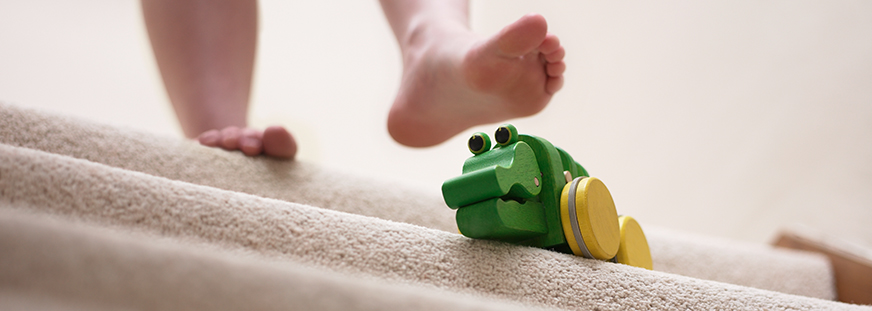Something as simple as a decorative rug or lamp cord can lead to an accidental fall in your home. That’s why it can be helpful to look at each area of your home with fresh eyes, and work to spot any potential hazards that may cause someone to experience an injury in or around your home.
Minimize Indoor Trip Hazards
According to the National Safety Council (NSC), common locations for falls include doorways, stairwells, cluttered hallways and areas prone to wetness and spills.
Here are some things the NSC suggests doing to help prevent slips and falls in these and other areas inside your home:
- Make sure you have adequate lighting.
- Arrange furniture so there are clear pathways for walking.
- Install handrails on both sides of stairways.
- Tuck electrical cords out of any traffic areas.
- Clean up spills as they happen, and keep everyone off freshly mopped floors.
- Remove throw rugs, or use non-skid backings to keep them from slipping.
It’s also important to consider your overnight guests, who may not be as familiar with the layout of your home. Here are some steps the NSC says you can take to help make your home safer for visitors:
- Place nightlights in the kitchen, bathrooms and hallways.
- Keep food, drinks and other frequently used items accessible, so that a stool or ladder isn’t needed to reach them.
- Set down non-slip mats in the bath or shower.
Reduce Trip Hazards Outdoors
Of course, trip hazards aren’t only possible indoors. Stairs, ramps and uneven walkways are also common locations for falls outdoors, says the NSC. These are some measures the NSC suggests that may help reduce hazards outside your home:
- Use adequate lighting, especially near steps, stairs or doorways.
- Direct downspouts so that water doesn’t accumulate on walkways.
- Install handrails on both sides of stairs.
- Remove debris from sidewalks and other pathways.
- Check the condition of walkways and stairs periodically, and either make immediate repairs or arrange for a pro to do it.
Just remember, a walkthrough of your home to eliminate trip hazards shouldn’t just be a one-time occurrence – it’s something you may want to consider doing on an ongoing basis. For instance, a cord may go astray or a new pile of clutter may pop up and need to be addressed. Doing periodic walkthroughs and fixing any hazards you see can help ensure that everyone who moves around your property can do so with peace of mind.
This article was originally published on The Allstate Blog.

